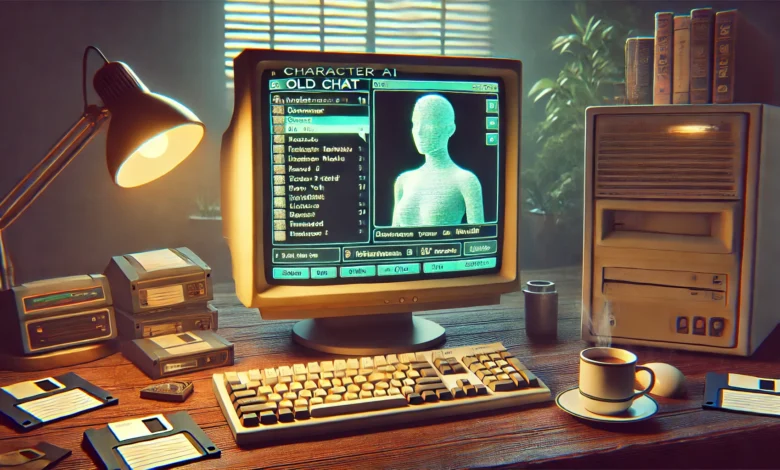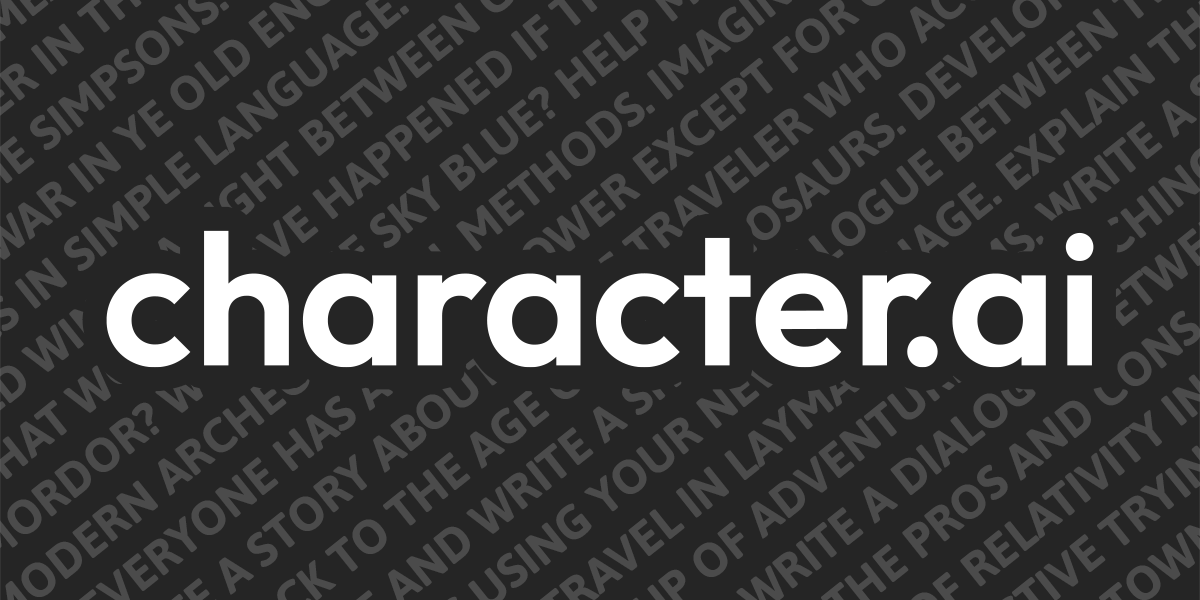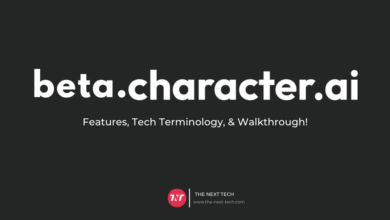Character AI Old Chat: Exploring the Evolution and Impact of AI-Driven Conversations

In recent years, Artificial Intelligence (AI) has become an integral part of our daily lives, making its presence felt in numerous industries. One area where AI has gained significant traction is in the realm of chatbots and conversational agents. Among the various AI platforms, Character AI old chat stands out as a popular tool that allows users to engage in dynamic, often personalized conversations with AI-driven characters. But what exactly is Character AI old chat, and how has it evolved over time? In this article, we’ll dive deep into the history, features, and impact of this technology, providing a comprehensive understanding of its role in modern AI communication.
What is Character AI Old Chat?
Character AI old chat refers to an early version of the conversational AI technology that allows users to interact with AI-driven characters. Unlike basic chatbots that often rely on predetermined scripts and responses, Character AI old chat allows for more complex, free-flowing conversations. These AI characters are designed to simulate human-like interactions, responding to user inputs in real-time and adapting their answers based on context.
In the case of Character AI old chat, the term “old” often refers to earlier iterations of the platform. While newer AI systems have become more sophisticated, capable of understanding and generating complex conversations, the older versions of Character AI still provide valuable insight into the evolution of AI-driven communication. These earlier models had more limited capabilities but still featured a sense of personality and interactive dialogue, which made them appealing to users.
Character AI’s old chat systems often featured characters with specific traits or personalities, making the interactions feel more immersive and engaging. Whether you were chatting with a fictional character, a historical figure, or a chatbot designed to simulate a real person, the goal was always to create a more human-like experience. Though the technology has advanced, the foundations of Character AI old chat still hold valuable lessons for the development of AI today.
The Evolution of Character AI Chatbots
To understand the significance of Character AI old chat, it’s important to explore the evolution of conversational AI as a whole. Early chatbots were rudimentary, relying on simple keyword-based responses or predefined answers to basic questions. These bots were limited in their ability to handle dynamic conversations, often falling short when faced with more complex queries.
The Rise of Natural Language Processing (NLP)
The development of Natural Language Processing (NLP) marked a turning point in the evolution of AI-driven conversations. NLP allows machines to understand and interpret human language more naturally, enabling them to handle a wider range of inputs and provide more contextually accurate responses. This advancement was a significant step toward creating more lifelike conversations.
While Character AI old chat platforms still had their limitations, they often used early versions of NLP to give characters more coherence and realism in their dialogue. By analyzing keywords, sentence structure, and user input, these platforms attempted to mimic human-like conversations, making them feel more engaging and responsive than earlier chatbot systems.
From Scripted Bots to Dynamic Interactions
Before the advent of NLP, many chatbots were highly scripted, relying on predetermined responses to guide the conversation. This made interactions feel robotic and often frustrating for users, as the chatbot’s responses would fail to account for the nuance or emotion behind the user’s questions. With the arrival of more advanced algorithms and machine learning techniques, Character AI old chat began to move away from rigid scripts and toward more dynamic, unscripted conversations.
By incorporating AI systems that could learn from previous interactions, Character AI old chat became more adaptive, responding to user inputs in ways that felt more natural and human. These older models still had some limitations, such as a lack of context retention across multiple chats, but they laid the groundwork for the more sophisticated systems we see today.
Machine Learning and Personalized Conversations
In more recent iterations of Character AI, machine learning algorithms have allowed chatbots to personalize conversations based on previous interactions. With Character AI old chat, early machine learning models were still in their infancy, but even these basic systems helped AI chatbots begin to understand users’ preferences and interests.
For example, if a user consistently asked a character about specific topics, the AI would start to recognize those preferences and tailor its responses accordingly. Over time, these advancements have made AI-driven conversations feel more individualized, giving users the impression that they are speaking with a unique, dynamic character rather than a one-size-fits-all chatbot.
Features of Character AI Old Chat Systems

While Character AI old chat systems were more limited than their modern counterparts, they still featured several key elements that made them appealing to users. Let’s explore some of the standout features of these early AI chat systems.
Character Personalities and Backstories
One of the defining features of Character AI old chat was the creation of unique character personalities and backstories. This approach helped users feel more immersed in the conversation and made interactions feel more engaging. Whether you were chatting with a fictional hero, a historical figure, or an AI designed to simulate a real person, the character’s personality often played a key role in the dynamic of the conversation.
These early AI characters were often designed with specific traits—such as humor, intelligence, or empathy—that would influence their responses. For instance, a character with a sarcastic personality might respond to a simple question with a witty or humorous remark, while a more serious character might take a more formal or thoughtful approach.
Basic Context Understanding
While Character AI old chat systems were limited in terms of context retention, they still employed basic mechanisms to understand the flow of conversation. This allowed the AI to maintain some level of continuity, responding to questions in a way that made sense based on what had been said earlier in the conversation.
For example, if a user asked a character about their favorite color, the AI would be able to remember that detail and bring it up later in the conversation, adding a layer of personalization. However, this context retention was not as sophisticated as it is in modern AI systems, which can remember multiple interactions across different conversations.
Emotional Tone and Responses
Even in its earlier stages, Character AI old chat was able to incorporate basic emotional responses into its interactions. This meant that the AI could detect emotional cues in the user’s input, such as frustration or excitement, and respond in a way that acknowledged those feelings. While these emotional responses were not always perfect, they helped create a more engaging and empathetic experience for users.
For instance, if a user expressed frustration over a problem, the AI might respond with something like, “I can understand how frustrating that must be. Let me help you find a solution.” This ability to detect and respond to emotions, albeit at a basic level, was a precursor to the more sophisticated sentiment analysis used in modern AI systems.
The Impact of Character AI Old Chat on Modern AI Technology
While Character AI old chat systems may seem primitive by today’s standards, they had a significant impact on the development of modern AI technologies. These early systems provided valuable insights into how AI could simulate human-like conversations, which laid the foundation for the more advanced platforms that we use today.
Improving User Experience
The limitations of Character AI old chat forced developers to think creatively about how to improve the user experience. By experimenting with different character traits, response mechanisms, and personalization techniques, developers began to understand the importance of context, tone, and personality in AI-driven conversations. These lessons were instrumental in shaping the design of more advanced AI platforms, which aim to provide a seamless and engaging experience for users.
Bridging the Gap Between Humans and Machines
Another significant impact of Character AI old chat was its role in bridging the gap between humans and machines. As users interacted with these early AI systems, they began to recognize the potential of AI to engage in more meaningful, personalized communication. This sparked interest in developing AI systems that could handle more complex conversations and provide more value to users, both in entertainment and practical applications.
Shaping AI for Entertainment and Therapy
While Character AI old chat was often used for entertainment purposes, its applications have expanded beyond that. Modern AI chatbots are used in a variety of fields, from mental health therapy to customer service, where they are trained to have empathetic conversations and provide support to users. The principles learned from Character AI old chat have paved the way for AI to be used in more diverse and impactful ways, helping people in meaningful, real-world scenarios.
Conclusion: The Legacy of Character AI Old Chat
Though Character AI old chat may no longer be as cutting-edge as newer AI technologies, its impact on the development of conversational AI cannot be overstated. By offering users the ability to interact with dynamic, personality-rich characters, it paved the way for more sophisticated, emotionally intelligent systems. Today’s AI chatbots owe much of their success to the foundational work done in earlier iterations like Character AI old chat, and as AI continues to evolve, it’s exciting to think about where this technology will go next.
